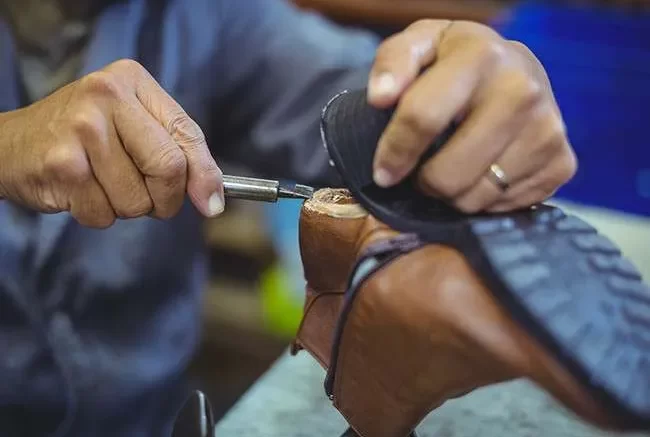In today’s marketplace, the distinction between hand-crafted and mass-produced shoes is significant, affecting not only the quality and durability of the products but also the ethical and environmental implications of their production.
As consumers become more conscious of their purchasing decisions, understanding these differences can help make more informed choices that align with personal values and preferences.
Hand-crafted shoes are typically produced in smaller quantities by skilled artisans who often use traditional methods passed down through generations. These craftsmen take pride in each shoe they produce, ensuring that every detail is perfect.
This method of production tends to use higher quality materials like top-grade leather, which not only lasts longer but also ages more gracefully. An example of such dedication to craftsmanship can be seen in Mou boots, which are celebrated for their durability and unique style.
In contrast, mass-produced shoes are made on a large scale in factories where speed and volume are priorities over the quality of the final product. This approach often results in a less durable product made from cheaper materials to cut costs and meet production quotas.
While this means lower prices and more accessible products for consumers, it often comes at the cost of inferior quality and a shorter lifespan for the shoes.
One of the most significant advantages of hand-crafted shoes is their durability. Because they are made with superior materials and meticulous attention to detail, these shoes are more robust and can endure wear better over time.
They are also more likely to be repairable, which extends their life even further. Mou footwear, for instance, are known for their robust construction, which allows them to withstand harsh conditions without losing their aesthetic appeal.
Furthermore, the environmental impact of shoe production is another area where hand-crafted and mass-produced shoes differ markedly.
Hand-crafted shoes are generally more sustainable. Artisans are more likely to source materials locally and use production methods that are less harmful to the environment. Additionally, because hand-crafted shoes are durable, they need to be replaced less frequently, reducing waste and the demand for new resources.
Mass-produced shoes, however, often come from factories that emit high levels of pollutants and use materials sourced from far away, increasing their carbon footprint.
The rapid production cycle and lower durability of these shoes also contribute to a culture of disposable fashion, which has significant environmental repercussions.
Another point to consider is the ethical implications of manufacturing. Hand-crafted shoe brands, including Mou boots, often maintain a transparent supply chain and adhere to fair labor practices, providing reasonable wages and working conditions for their artisans. This is not always the case in large-scale factory settings, where workers can sometimes face poor conditions and low pay.
Lastly, the personal connection with the product is a unique aspect of hand-crafted shoes. Purchasing from a craftsman allows you to know where and how your shoes were made, often with the opportunity to customize aspects of the design. This can create a deeper appreciation and connection to the footwear, as opposed to the anonymous, cookie-cutter process of mass production.
The popularity of brands like Mou boots demonstrates a growing consumer preference for products that are not only stylish and durable but also ethically produced and environmentally friendly.
While mass-produced shoes can provide affordability and variety, the benefits of hand-crafted footwear—superior quality, sustainability, ethical production, and personal connection—offer compelling reasons for their higher price point.
Conclusion
The choice between hand-crafted and mass-produced shoes involves more than just an aesthetic preference; it reflects a broader decision about what kind of consumer practices one wants to support. For those who value quality over quantity, sustainability over disposability, and ethics over economics, hand-crafted shoes represent a wise and rewarding investment.

Be the first to comment on "Hand-Crafted vs. Mass-Produced Shoes: A Detailed Comparison"